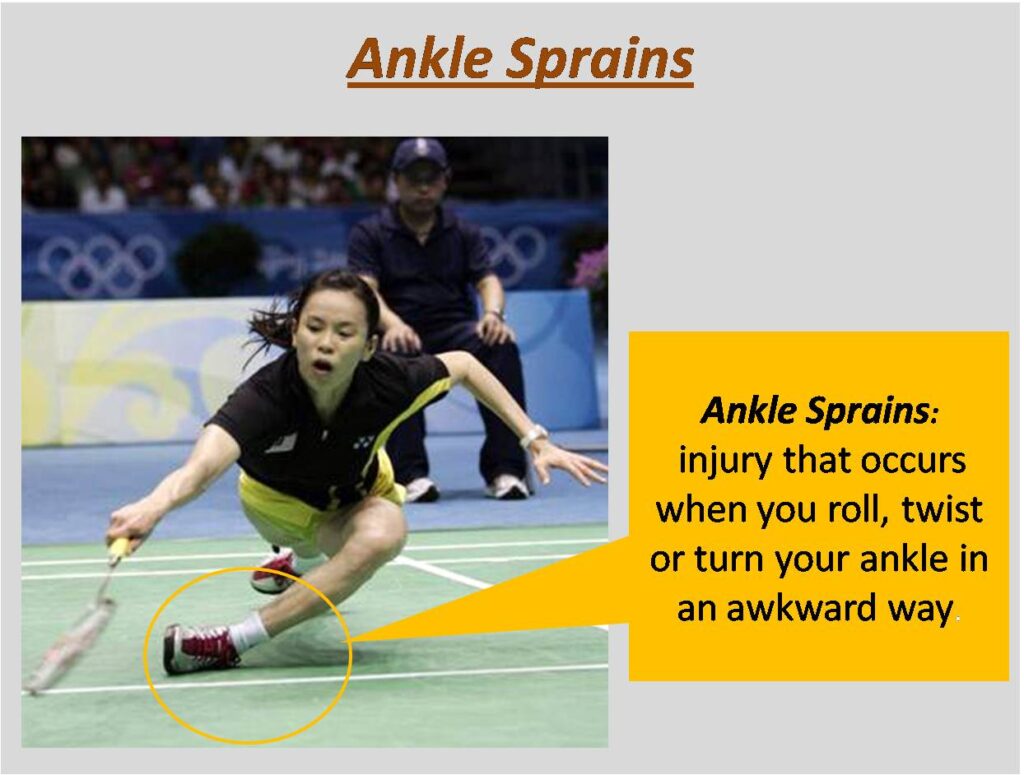Badminton, indeed is a fun and playful sport. The level of work and commitment required is unmatched, though. You must commit to the game no matter what challenges you face as a player, from the necessity for certain abilities to endurance. If you give your full attention to the game, it is sometimes evident that you may experience injuries and setbacks. But the game always has a method of going back.
This blog talks about some common badminton injuries and how you can prevent them. Shoulder, elbow, wrist, ankle, and knee injuries are some of the typical ones that occur during games. A player may also sustain lower limb injuries when a significant percentage of jumping occurs. There is more to it – so let’s discover some common badminton injuries and the methods to prevent them.
The Broader Categories of Injuries
Talking of the two most common types of injuries suffered while playing is overuse injuries and acute injuries.
When recurrent events occur, and incorrect technique or overtraining is used, overuse injuries result.
Acute injuries occur when unanticipated movements, such as falling, take place.
Common Types of Injuries
1. Ankle sprains
These are the most frequent injuries sustained when playing badminton. A player who is more actively engaged in the game risks falling or suffering only an ankle sprain, which may be a big setback. Ankle sprains can develop when a player changes direction while playing or makes an awkward landing.
Using supportive shoes that fit comfortably and are guaranteed to warm up and extend the ankles before playing is essential for preventing ankle sprains.

If a sprain occurs, other preventive measures include using ice, resting, and elevating and compressing the injured area to lessen discomfort and swelling.
2. Shoulder ailment
Shoulder pain after playing badminton is common. Sometimes, severe conditions can arise, such as when playing badminton and experiencing excruciating biceps muscle pain while playing badminton. Moreover, shoulder injuries can manifest themselves when certain overhead-hitting actions take place. Another scenario in which this kind of injury could happen is if you utilize the bad technique, overuse it, or are exhausted.

All you have to do to avoid shoulder injuries is concentrate on your shuttlecock technique and take regular breaks throughout the game to avoid fatigue. Becoming too engrossed in the game might harm your health, and playing continuously is never a smart choice. When necessary, seek medical care. During badminton smash or 3rd line hitting players need to take extra care while putting power. Do not jerk should or hand to generate the power as it will impact the shoulder muscles and could cause shoulder inquires.
3. Knee pain due to patellar tendinitis
After an overhead smash or stroke, going for a quick sidestep can be risky and may lead to knee soreness, another among the many common badminton injuries. Also, it causes ligament damage, which becomes the primary source of the pain and continues to obstruct daily activities.

Knee injuries can also happen when fast, twisting movements happen or are necessary during badminton. The greatest way to avoid knee problems is to purchase and wear well-fitting, high-quality shoes. Moreover, before playing, always warm up and stretch your knees.
Elevate the part that is hurt, apply ice, and relax. Seek medical attention if required.
4. RSI/tendonitis of the wrist
We refer to this as a repetitive sprain injury. It speaks of pain that gradually develops and typically affects the wrist, hands, or forearms. If the correct amount of care is not paid for, the symptoms can gradually get more severe and start to be seen over time. In certain cases, this pain may have a dull ache or a throbbing sensation in addition to being more acute.
You can avoid this injury by getting enough rest, engaging in physical therapy, and practicing ergonomics and stretching. You should also pay attention to how you move and hold yourself. Using ice, heat, medicines, and injections are preventative strategies.
5. Hand pain or injury
This type of wrist pain or injury can occasionally manifest itself when the player is too immersed in the game and not paying attention to where his hands are moving. This discomfort or harm could result from an acute injury brought on by an abrupt force. Moreover, it may occur due to repetitive strain injury or overuse.
The sensation of being sore to the touch and possible swelling are signs of this type of damage. However, moving the wrist against resistance is likely to cause discomfort to return. Hence, you must be careful not to overtwist your hands when playing and use the proper technique.
6. Lower back injuries
This one, among the many common badminton injuries, asks for twisting and bending movements required in badminton. If not treated promptly, lower back problems can have a fatal outcome for the athlete and have an adverse effect on their entire playing career.

The player must ensure proper technique when striking the shuttlecock or take frequent rests from exhaustion to prevent lower back issues.
Warm damping, ice, or some rest will help if you are having trouble handling the discomfort. But seeking medical help is the best action if these cures don’t work.
7. Rotator cuff tendinopathy
The degenerative disease impacts one or more rotator cuff tendons in the shoulder. One of the most prevalent types of shoulder pain is badminton rotator cuff injury, which often develops gradually over time or after a rotator cuff strain that hasn’t healed adequately.

When you seek early medical guidance and expert assistance when you cannot treat rotator cuff tendinopathy at home, the condition can be treated and managed. When you have a more reliable answer, the route to recovery becomes effective.
Other time-tested methods for recovering from this type of injury include stretching, technique correction, recovery time, pain management, and surgery. When all other conservative treatment options have been exhausted, and surgery is the only option left, it is usually done as a last resort.
Broader Defence to injuries: Common Prevention Techniques
Badminton’s common injuries come uninvited. This suggests that to face failures and leave the situation as soon as possible; one must be ready in advance. Typical techniques for avoiding badminton injuries include:
1. Warming up with different exercises
Landing straight on the playing court can be taxing and demanding. As a player, you must get your body parts ready for the game, including your feet, arms, wrists, shoulders, and other body parts.
When warming up, find the appropriate shoe fit and make your body comfortable and friendly to the court so that you are ready to strike some winning smashes and can prevent abrupt injuries if you participate in a hard activity.
2. Stretching
Every badminton player should stretch, and they should practice it rigorously. It is always essential or expected of a player to be fully prepared for lunging and fast steps during play. Make sure you can offer extended motions during a decent stretching session to set high standards for yourself while playing.
This can be done by planning a preceding playing session for roughly 15-20 minutes. No matter how many difficult turns the game may take later on, stretching regularly as a player might help you avoid injury. So, you should stick to your stretching routine.
3. Strengthening of muscles
Another approach to preventing injuries is making your muscles stronger, more resilient, and more prepared. Strong muscles provide the joints with more widespread support, enhance overall performance, and increase stability. There are numerous workouts you can do to try to build stronger muscles.
You can obtain a faultless and injury-free game by engaging in some popular muscle-strengthening exercises for your upper body, legs, and core.
Also, you must consume meals high in vitamins and minerals because they can help your muscles grow stronger than ever naturally and beneficially. Unexpected injuries happen; thus, you must concentrate on your muscles and their strength as a player.
4. Using the correct badminton racket and technique
Each shot in the game uses a different set of techniques. As a result, as a player, you must be ready for every shot and the curves, twists, and bends the game will throw your way. This does not imply that you can just do it; you must have a system for carrying out each strategy and a backup plan in case you are hurt while using it.
So, the proper approach to preventing harm is to be aware of the proper set of procedures and how to follow them. You should also learn how to grip, hold, and use the racket, including how to hold it from the wrist, so it doesn’t hit you back.
Final Words
Despite being entertaining, badminton has always required commitment. You can always count on the opposing team to devise a new means to hit the shuttle, in which case you’ll need to smash or hit it back harder to score. Avoiding injuries should be the major goal of the entire process, along with winning or participating. This may be done by using the proper technique and equipment.
If you sustain injuries, you must seek medical attention if you can’t get the affected area better at home. Delays may eventually come back to haunt you.